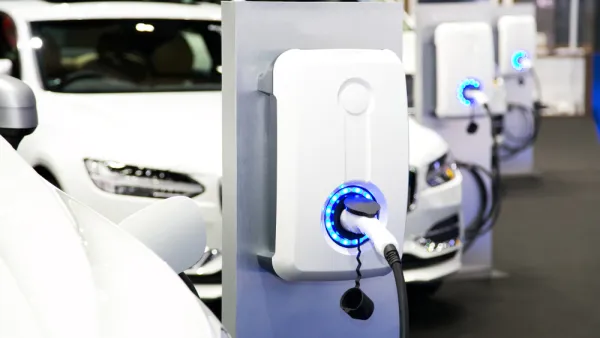Similar to other plans focused on reducing emissions from the transportation plan, North Carolina’s draft Clean Transportation Plan will rely on electric vehicles to reduce emissions from the state’s transportation sector.
The state of North Carolina recently published a draft Clean Transportation Plan as the result of a January 2022 executive order by Governor Roy Cooper. The plan calls for the North Carolina Department of Transportation to create a team dedicated to emission reductions and efforts to promote electric vehicles (EVs), transit, and other forms of mobility that rely less on gas combustion engines.
The Clean Transportation Interagency Task Force proposed by the plan would include representatives from the state’s Commerce, Environmental Quality, and Health and Human Services departments.
According to an article by Richard Stradling, published behind a paywall at the Charlotte Observer but also available at Government Technology, the transportation sector produced 36 percent of the state’s greenhouse gas emissions—a plurality among all other emitters in the state.
Stradling also explains that the plan follows a mandate from the executive order to make a plan that would put 1.25 million zero emission vehicles (ZEVs) on the road in the state by 2030.
“The draft plan covers a range of areas, including finance, NCDOT policies and practices and coordination with utility companies,” writes Stradling, while also pursuing ‘equitable outcomes for everyone.’
The state of North Carolina’s focus on EVs for emissions reductions falls short of the model provided by the state of California, but mimics that plan, along with the federal Inflation Reduction Act, in relying on EVs to reduce emissions from the transportation sector. One of the most prominent debates in transportation planning right now focuses on the question of whether EVs will be enough to prevent the worst effects of climate change, or if the country is missing a once-in-a-generation opportunity to reverse some of the damaging effects of over a century’s worth of car-centric planning.
Stradling’s article can be read in full at the link below.
FULL STORY: North Carolina DOT Outlines Plan for Cutting Emissions

Analysis: Cybertruck Fatality Rate Far Exceeds That of Ford Pinto
The Tesla Cybertruck was recalled seven times last year.

National Parks Layoffs Will Cause Communities to Lose Billions
Thousands of essential park workers were laid off this week, just before the busy spring break season.

Retro-silient?: America’s First “Eco-burb,” The Woodlands Turns 50
A master-planned community north of Houston offers lessons on green infrastructure and resilient design, but falls short of its founder’s lofty affordability and walkability goals.

Test News Post 1
This is a summary

Analysis: Cybertruck Fatality Rate Far Exceeds That of Ford Pinto
The Tesla Cybertruck was recalled seven times last year.

Test News Headline 46
Test for the image on the front page.
Urban Design for Planners 1: Software Tools
This six-course series explores essential urban design concepts using open source software and equips planners with the tools they need to participate fully in the urban design process.
Planning for Universal Design
Learn the tools for implementing Universal Design in planning regulations.
EMC Planning Group, Inc.
Planetizen
Planetizen
Mpact (formerly Rail~Volution)
Great Falls Development Authority, Inc.
HUDs Office of Policy Development and Research
NYU Wagner Graduate School of Public Service




























